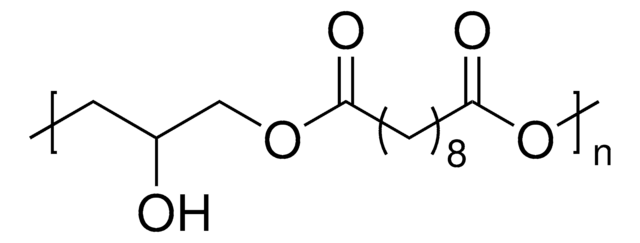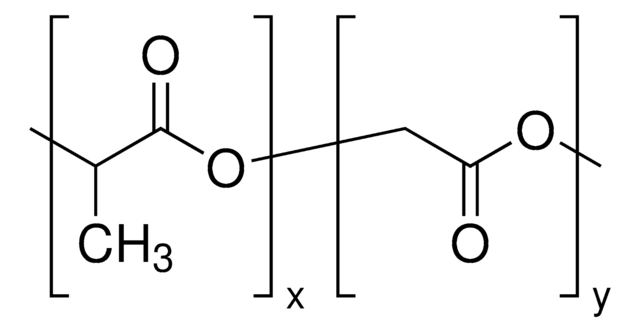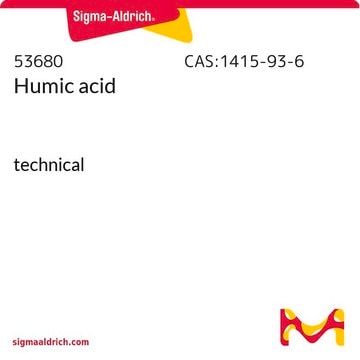900210
Regenerez® Poly(glycerol sebacate) Resin
Sinónimos:
PGS, Poly(glycerol sebacic acid)
About This Item
Productos recomendados
Formulario
paste
Nivel de calidad
temperatura de transición
flash point >230 °F
temp. de almacenamiento
−20°C
Aplicación
Características y beneficios
- Bioresorbable.
- Comprised of naturally occurring metabolites (glycerol and sebacic acid).
- Tunable mechanical properties.
- Versatile platform for further modification.
- Closely simulates modulus of human tissue.
- Enables healing without harmful immune response.
Información legal
Código de clase de almacenamiento
11 - Combustible Solids
Clase de riesgo para el agua (WGK)
WGK 3
Punto de inflamabilidad (°F)
No data available
Punto de inflamabilidad (°C)
No data available
Elija entre una de las versiones más recientes:
Certificados de análisis (COA)
¿No ve la versión correcta?
Si necesita una versión concreta, puede buscar un certificado específico por el número de lote.
¿Ya tiene este producto?
Encuentre la documentación para los productos que ha comprado recientemente en la Biblioteca de documentos.
Los clientes también vieron
Filtros activos
Nuestro equipo de científicos tiene experiencia en todas las áreas de investigación: Ciencias de la vida, Ciencia de los materiales, Síntesis química, Cromatografía, Analítica y muchas otras.
Póngase en contacto con el Servicio técnico











